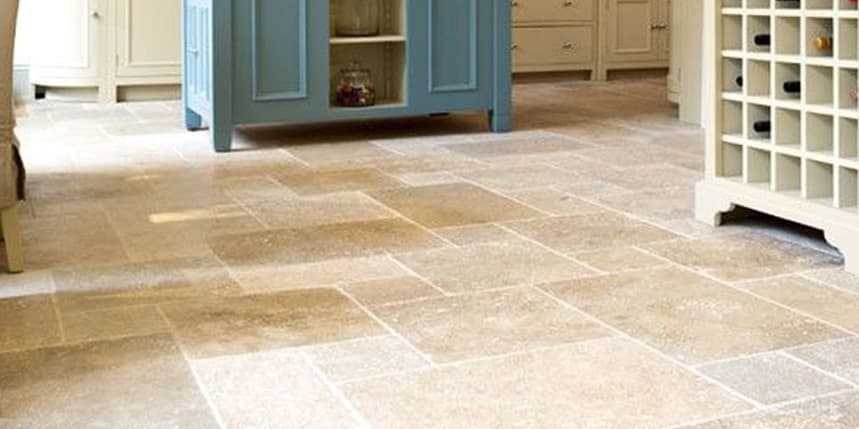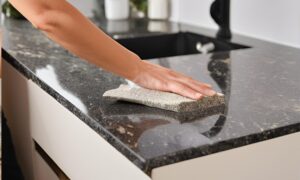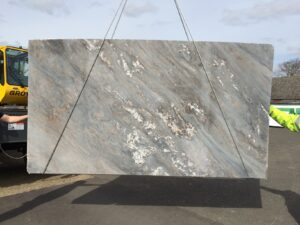A Guide to Stone Flooring
Timeless and hard-wearing, a stone floor is a great investment for your dream home. Deciding which stone to use and whether to go for slabs or stone tiles are just a few of the key decisions you’ll make. Read our introduction to stone flooring below, or give us a call – our experts are happy to talk you through the options.
Which stones are best for floors?
Hard stones like granite and slate are often recommended for stone floors, particularly in high traffic areas like the hallway or kitchen. However, that’s not the only option and soft stones, including marble and limestone, have been popular for hundreds of years – some marble floors have lasted centuries, in fact.
How can a stone be soft?
We often describe marble and limestone as relatively delicate or ‘soft’. They’re still as hard as rock but are more porous and easier to scratch than super-tough stones like granite. Being porous means that if they’re not sealed, water and dirt can lodge in tiny holes in the surface, so stains are more likely. For this reason, soft stone floors are usually finished with a sealant that protects the surface and prevents staining.
What colours are there to choose from?
The natural stone look is ideal for period buildings or creating a cosy, farmhouse feel but it’s not the only option. Thanks to modern processed stones, there’s an enormous choice of colours and textures available in both slabs and stone tiles. This is great news for designers, as it’s easy to create a statement floor that’s also incredibly practical. Natural stone comes in all the colours of the rainbow, but typically the hues are muted so if you want a bright shade, ask us about engineered stone.
Should I choose slabs or tiles?
The two main options for stone flooring are tiles, which are pre-manufactured and cut into uniform shapes, and slabs, which are typically shaped to fit a particular room. Seamless slabs are usually more expensive as it’s custom work. However, the larger pieces can create a stunning effect. This is the style you’ll see in traditional marble floors from Buckingham Palace to the Empire State Building. Unsurprisingly, as tiles are more affordable, they’re more popular in family homes.
Is a stone floor expensive?
Installing a stone floor is skilled work, and takes longer than carpeting or laying linoleum. The materials costs are also typically higher per square meter, although affordable stone tiles have made stone floors more accessible. The main difference is the whole life cost of stone: as it’s incredibly hard-wearing, stone can easily last decades. While kitchen linoleum might need to be replaced after a few years, and carpets typically look threadbare after a decade, stone floors in ancient palaces are entering their second millennium. We don’t promise you’ll get a century of wear out of one of our floors, but we’re not ruling it out!





